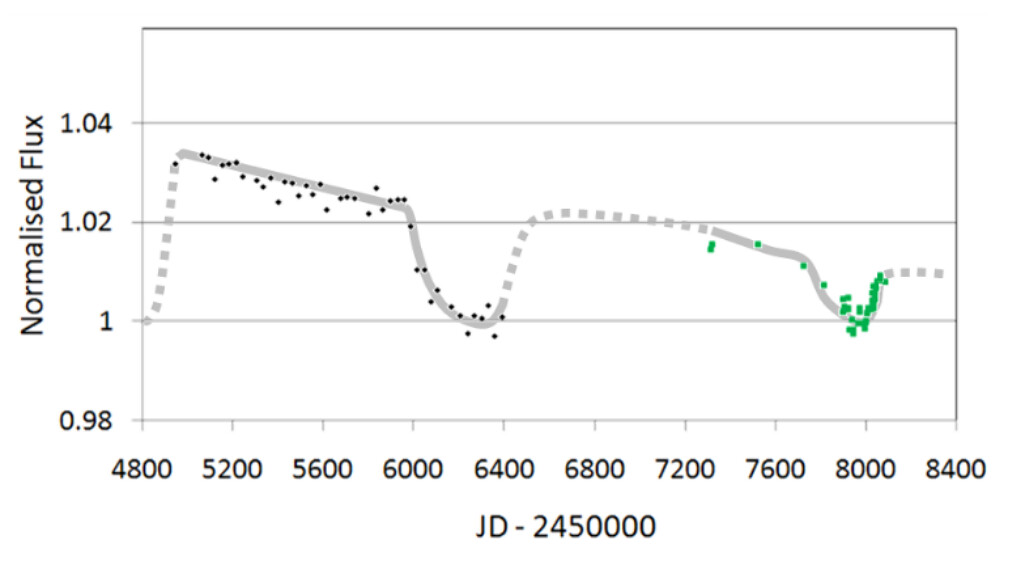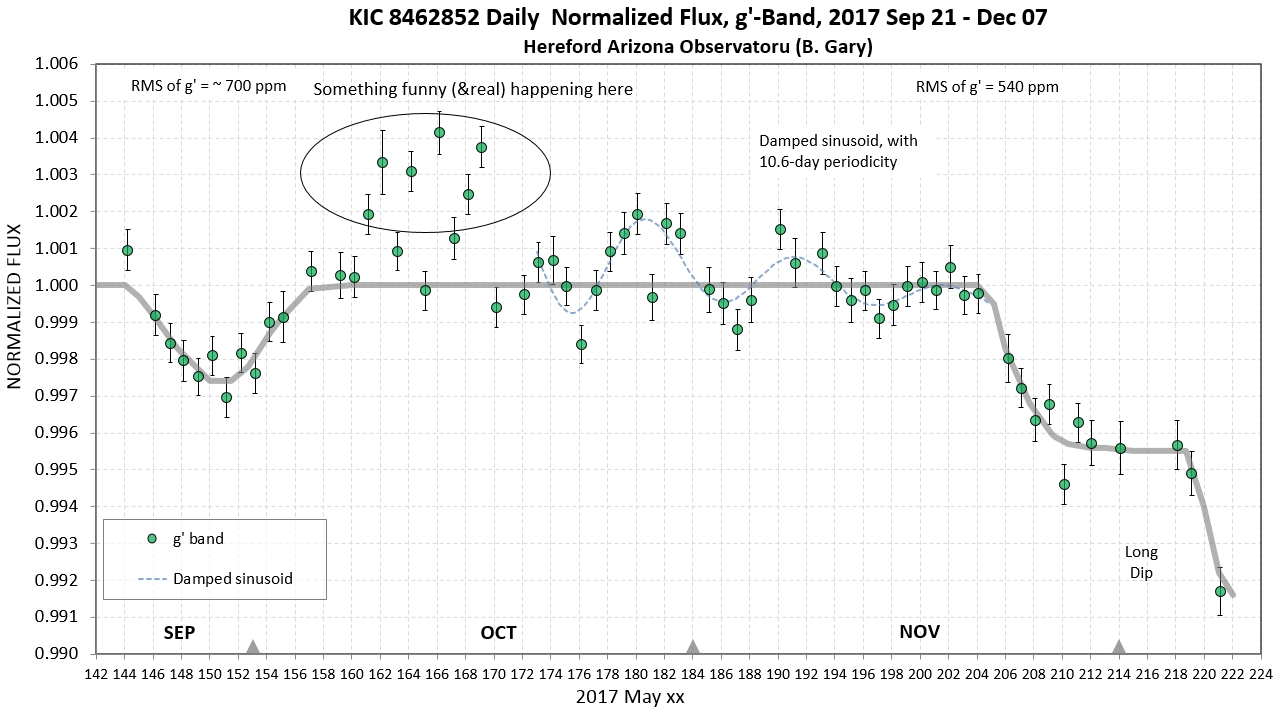
symaski62
-
Compteur de contenus
1 062 -
Inscription
-
Dernière visite
-
Last Connexion
Soon available - 43423
Messages posté(e)s par symaski62
-
-
trop vent report 24 heures
22/02/2018 15h17 CET
-
-
-
http://www.minorplanetcenter.net/db_search/show_object?utf8=✓&object_id=C%2F2017+K2
mise à jour image +18 mag total
2018 01 12.81740 17 51 30.81 +56 00 09.4 18.1 T 349 – Ageo MPC 107776
avent
1/aorigine = 0.00003028+-0.0000094 (MPEC 2017-V13)
après
recip semimajor axis orig (AU) 0.00004445
-
https://www.projectpluto.com/temp/spacex.htm
Created 2018 Feb 8 21:52:59 UT using Find_Orb
Orbital elements (heliocentric): 2018-017A Perihelion 2018 Feb 4.203465 +/- 0.001 TT = 4:52:59 (JD 2458153.703465) Epoch 2018 Feb 10.0 TT = JDT 2458159.5 Earth MOID: 0.0002 Ma: 0.0009 M 3.68515 +/- 0.0016 (J2000 ecliptic) Gray n 0.63575070 +/- 0.000176 Peri. 177.28090 +/- 0.00022 a 1.33950646 +/- 0.000247 Node 317.46990 +/- 0.0010 e 0.2638608 +/- 0.000136 Incl. 1.10989 +/- 0.00058 P 1.55/566.25d H 25.7 G 0.15 U 6.9 q 0.98606318 +/- 3.95e-8 Q 1.69294974 +/- 0.000494 53 of 57 observations 2018 Feb. 8 (14.0 hr); mean residual 0".414
-------------------------------------
https://ssd.jpl.nasa.gov/horizons.cgi
Ephemeris Type [change] : OBSERVER Target Body [change] : SpaceX Roadster (spacecraft) (Tesla) [-143205] Observer Location [change] : Mars (body center) [500@499] Time Span [change] : Start=2020-09-01, Stop=2020-10-31, Step=1 h Table Settings [change] : defaults Display/Output [change] : default (formatted HTML)
-
-
-
-
-
-
-
bientôt lune rouge

-
75 % plus éclipse lune
-
-
https://arxiv.org/abs/1801.06957
EPIC 210897587: A Bright Metal-Poor M Dwarf with Three Transiting Super-Earths
3 planètes !
-
1
-
-
1:18 pause, ( paramètres => vitesse 0.25 )
début:
1) 18.85 °C => 292°K
2) -253.15°C => 20°K
3) -168.15°C => 105°K
4) -198.15°C => 75°K
5) -153.15°C => 120°K
6) -133.15°C => 140°K
7) 18.85°C => 292°K
FIN
-
2
-
-
https://arxiv.org/abs/1801.02554
CitationEarly 2017 observations of TRAPPIST-1 with Spitzer
To further advance our understanding of these planets' compositions, energy budgets, and dynamics, we are carrying out an intensive photometric monitoring campaign of their transits with the Spitzer Space Telescope. In this context, we present 60 new transits of the TRAPPIST-1 planets observed with Spitzer/IRAC in February and March 2017.
pages 7 => Table 1. Updated system parameters: median values and 1-σ limits of the posterior PDFs derived from our global MCMC analysis
TRAPPIST-1 à Spitzer Space Telescope février à mars 2017

-
https://arxiv.org/abs/1801.00738
The hidden depths of planetary atmospheres
We provide results for a few exoplanets, notably those in the TRAPPIST-1 system, to help the scientific community estimate the impact of refraction on the size of spectral features without radiative transfer calculations, and thus help refine planned James Web Space Telescope observations.

-
https://arxiv.org/abs/1712.05669
The Pluto System After New Horizons
page 49 et 50 Pluto et (N2 et CH4) HAZE
page 55 et 56 planète et lune

-
1
-
-
-
-
https://arxiv.org/abs/1711.10612
Recent Photometric Monitoring of KIC 8462852, the Detection of a Potential Repeat of the Kepler Day 1540 Dip and a Plausible Model

-
https://arxiv.org/abs/1711.09128
Role of the global water ocean on the evolution of Titan's primitive atmosphere
-




Falcon Heavy : l'Odysée de la Tesla dans l'espace
dans Astronomie générale
Posté(e)